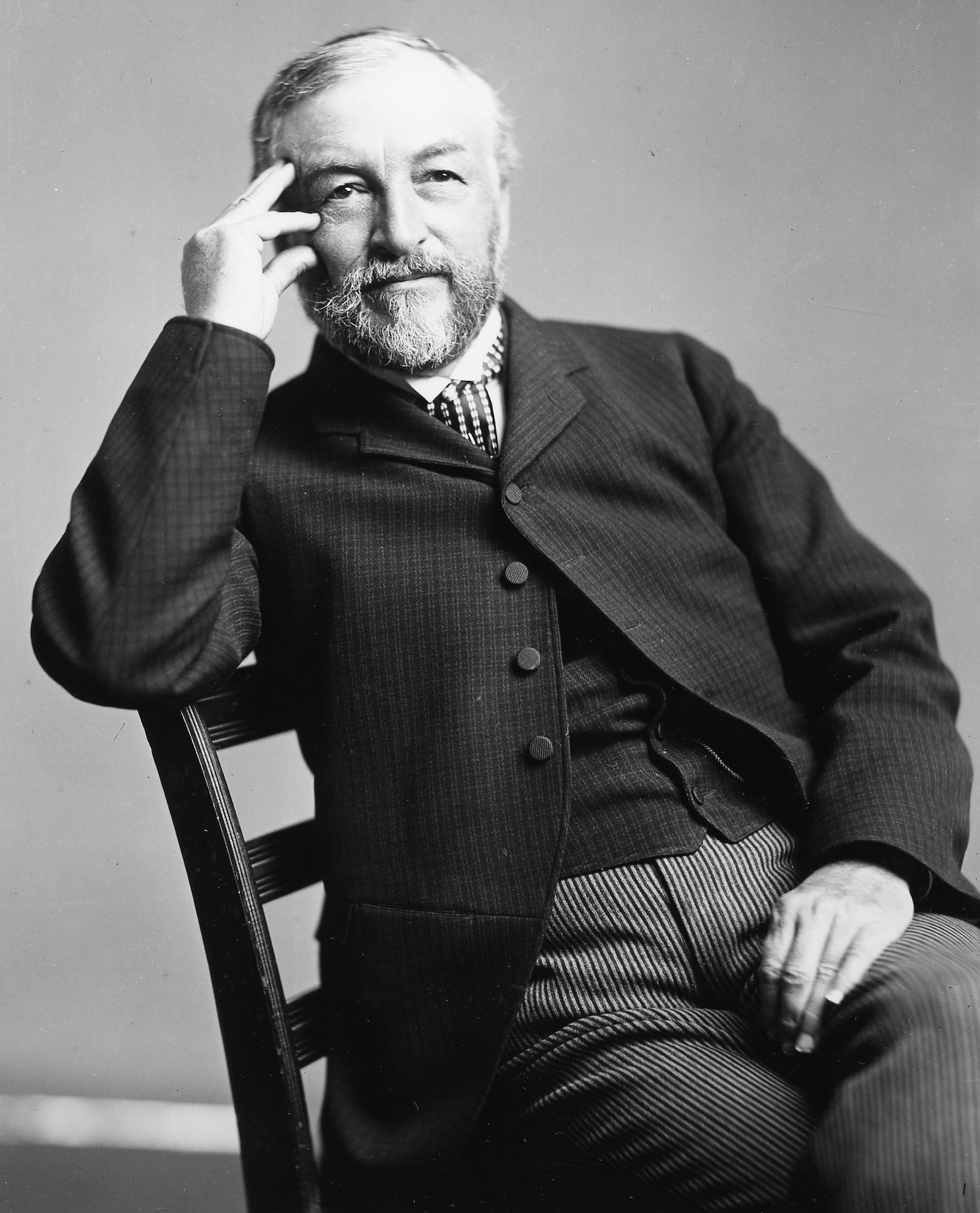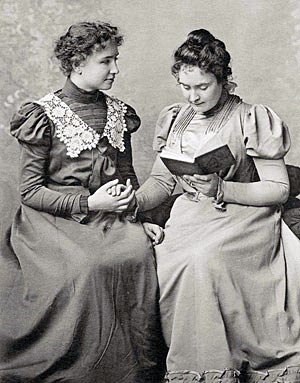|
Paul W. Merrill
Paul Willard Merrill (August 15, 1887 – July 19, 1961) was an American astronomer whose specialty was spectroscopy. He was the first person to define S-type stars, in 1922. Career Merrill received his Ph.D. at the University of California (now UC Berkeley) in 1913. He spent the bulk of his career at Mount Wilson Observatory, from which he retired in 1952. He studied unusual stars, particularly long-period variable stars, using spectroscopy. He also studied the interstellar medium, including diffuse interstellar bands. Shortly before he retired, he succeeded in detecting technetium in the variable star R Andromedae and other red variables. Since technetium has no stable isotopes, it must have been produced recently in any star in which it is found, and this is direct evidence of the s-process of nucleosynthesis. Honors Awards and honors *Member of the United States National Academy of Sciences (1929) *Member of the American Philosophical Society (1939) *Henry Draper Medal of th ... [...More Info...] [...Related Items...] OR: [Wikipedia] [Google] [Baidu] |
Variable Stars
A variable star is a star whose brightness as seen from Earth (its apparent magnitude) changes systematically with time. This variation may be caused by a change in emitted light or by something partly blocking the light, so variable stars are classified as either: * ''Intrinsic variables'', whose luminosity actually changes periodically; for example, because the star swells and shrinks. * ''Extrinsic variables'', whose apparent changes in brightness are due to changes in the amount of their light that can reach Earth; for example, because the star Eclipsing binaries, has an orbiting companion that sometimes eclipses it. Many, possibly most, stars exhibit at least some oscillation in luminosity: the energy output of the Sun, for example, varies by about 0.1% over an 11-year solar cycle. Discovery An ancient Egyptian calendar of lucky and unlucky days composed some 3,200 years ago may be the oldest preserved historical document of the discovery of a variable star, the eclipsin ... [...More Info...] [...Related Items...] OR: [Wikipedia] [Google] [Baidu] |
Henry Draper Medal
The Henry Draper Medal is awarded every 4 years by the United States National Academy of Sciences "for investigations in astronomical physics". Named after Henry Draper, the medal is awarded with a gift of USD $15,000. The medal was established under the Draper Fund by his widow, Anna Draper, in honor of her husband, and was first awarded in 1886 to Samuel Pierpont Langley "for numerous investigations of a high order of merit in solar physics, and especially in the domain of radiant energy". It has since been awarded 45 times. The medal has been awarded to multiple individuals in the same year: in 1977 it was awarded to Arno Allan Penzias and Robert Woodrow Wilson "for their discovery of the cosmic microwave radiation (a remnant of the very early universe), and their leading role in the discovery of interstellar molecules"; in 1989 to Riccardo Giovanelli and Martha P. Haynes "for the first three-dimensional view of some of the remarkable large-scale filamentary structures of o ... [...More Info...] [...Related Items...] OR: [Wikipedia] [Google] [Baidu] |
University Of California Alumni
A university () is an institution of tertiary education and research which awards academic degrees in several academic disciplines. ''University'' is derived from the Latin phrase , which roughly means "community of teachers and scholars". Universities typically offer both undergraduate and postgraduate programs. The first universities in Europe were established by Catholic monks. The University of Bologna (), Italy, which was founded in 1088, is the first university in the sense of: *being a high degree-awarding institute. *using the word (which was coined at its foundation). *having independence from the ecclesiastic schools and issuing secular as well as non-secular degrees (with teaching conducted by both clergy and non-clergy): grammar, rhetoric, logic, theology, canon law and notarial law.Hunt Janin: "The university in medieval life, 1179–1499", McFarland, 2008, , p. 55f.de Ridder-Symoens, Hilde''A History of the University in Europe: Volume 1, Universities in the Midd ... [...More Info...] [...Related Items...] OR: [Wikipedia] [Google] [Baidu] |
Fellows Of The American Academy Of Arts And Sciences
Fellows may refer to Fellow, in plural form. Fellows or Fellowes may also refer to: Places *Fellows, California, USA *Fellows, Wisconsin, ghost town, USA Other uses *Fellowes, Inc., manufacturer of workspace products *Fellows, a partner in the firm of English canal carriers, Fellows Morton & Clayton *Fellows (surname) *Mount Fellows, a mountain in Alaska See also *North Fellows Historic District, listed on the National Register of Historic Places in Wapello County, Iowa *Justice Fellows (other) {{disambiguation ... [...More Info...] [...Related Items...] OR: [Wikipedia] [Google] [Baidu] |
1961 Deaths
Events January * January 1 – Monetary reform in the Soviet Union, 1961, Monetary reform in the Soviet Union. * January 3 ** United States President Dwight D. Eisenhower announces that the United States has severed diplomatic and consular relations with Cuba (Cuba–United States relations are restored in 2015). ** Aero Flight 311 (Koivulahti air disaster): Douglas DC-3C OH-LCC of Finnish airline Finnair, Aero crashes near Kvevlax (Koivulahti), on approach to Vaasa Airport in Finland, killing all 25 on board, due to pilot error: an investigation finds that the Captain (civil aviation), captain and First officer (civil aviation), first officer were both exhausted for lack of sleep, and had consumed excessive amounts of alcohol at the time of the crash. It remains the deadliest air disaster to occur in the country. * January 5 ** Italian sculptor Alfredo Fioravanti enters the U.S. Consulate in Rome, and confesses that he was part of the team that forged the Etruscan terra ... [...More Info...] [...Related Items...] OR: [Wikipedia] [Google] [Baidu] |
1887 Births
Events January * January 11 – Louis Pasteur's anti- rabies treatment is defended in the Académie Nationale de Médecine, by Dr. Joseph Grancher. * January 20 ** The United States Senate allows the United States Navy to lease Pearl Harbor as a naval base. ** British emigrant ship '' Kapunda'' sinks after a collision off the coast of Brazil, killing 303 with only 16 survivors. * January 21 ** The Amateur Athletic Union (AAU) is formed in the United States. ** Brisbane receives a one-day rainfall of (a record for any Australian capital city). * January 24 – Battle of Dogali: Abyssinian troops defeat the Italians. * January 28 ** In a snowstorm at Fort Keogh, Montana, the largest snowflakes on record are reported. They are wide and thick. ** Construction work begins on the foundations of the Eiffel Tower in Paris, France. February * February 2 – The first Groundhog Day is observed in Punxsutawney, Pennsylvania. * February 4 – The Interstate Comme ... [...More Info...] [...Related Items...] OR: [Wikipedia] [Google] [Baidu] |
Moon
The Moon is Earth's only natural satellite. It Orbit of the Moon, orbits around Earth at Lunar distance, an average distance of (; about 30 times Earth diameter, Earth's diameter). The Moon rotation, rotates, with a rotation period (lunar day) that is synchronized to its orbital period (Lunar month#Synodic month, lunar month) of 29.5 Earth days. This is the product of Earth's gravitation having tidal forces, tidally pulled on the Moon until one part of it stopped rotating away from the near side of the Moon, near side, making always the same lunar surface face Earth. Conversley, the gravitational pull of the Moon, on Earth, is the main driver of Earth's tides. In geophysical definition of planet, geophysical terms, the Moon is a planetary-mass object or satellite planet. Its mass is 1.2% that of the Earth, and its diameter is , roughly one-quarter of Earth's (about as wide as the contiguous United States). Within the Solar System, it is the List of Solar System objects by ... [...More Info...] [...Related Items...] OR: [Wikipedia] [Google] [Baidu] |
Merrill (crater)
Merrill is a lunar impact crater. It is located in the high northern latitudes, on the far side. Less than one crater diameter to the south-southwest of Merrill is the similar Niepce, and to the east along the northern limb is the larger Brianchon. The outer rim of Merrill is worn and the features are softened, but only a few impact craters lie along the edge and inner side. The inner walls are uneven slopes down to the relatively flat interior floor. This surface is marked by several small craterlets, including a pair near the midpoint. The satellite A satellite or an artificial satellite is an object, typically a spacecraft, placed into orbit around a celestial body. They have a variety of uses, including communication relay, weather forecasting, navigation ( GPS), broadcasting, scient ... craters Merrill X and Merrill Y form a merged, dual-lobed feature that is attached to the northern outer rim of Merrill. Satellite craters By convention these features are ident ... [...More Info...] [...Related Items...] OR: [Wikipedia] [Google] [Baidu] |
American Academy Of Arts And Sciences
The American Academy of Arts and Sciences (The Academy) is one of the oldest learned societies in the United States. It was founded in 1780 during the American Revolution by John Adams, John Hancock, James Bowdoin, Andrew Oliver, and other Founding Fathers of the United States. It is headquartered in Cambridge, Massachusetts. Membership in the academy is achieved through a nominating petition, review, and election process. The academy's quarterly journal, '' Dædalus'', is published by the MIT Press on behalf of the academy, and has been open-access since January 2021. The academy also conducts multidisciplinary public policy research. Laurie L. Patton has served as President of the Academy since January 2025. History The Academy was established by the Massachusetts legislature on May 4, 1780, charted in order "to cultivate every art and science which may tend to advance the interest, honor, dignity, and happiness of a free, independent, and virtuous people." The sixty-tw ... [...More Info...] [...Related Items...] OR: [Wikipedia] [Google] [Baidu] |
American Astronomical Society
The American Astronomical Society (AAS, sometimes spoken as "double-A-S") is an American society of professional astronomers and other interested individuals, headquartered in Washington, DC. The primary objective of the AAS is to promote the advancement of astronomy and closely related branches of science, while the secondary purpose includes enhancing astronomy education and providing a political voice for its members through lobbying and grassroots activities. Its current mission is to enhance and share humanity's scientific understanding of the universe as a diverse and inclusive astronomical community. History The society was founded in 1899 through the efforts of George Ellery Hale. The constitution of the group was written by Hale, George Comstock, Edward Morley, Simon Newcomb and Edward Charles Pickering. These men, plus four others, were the first Executive Council of the society; Newcomb was the first president. The initial membership was 114. The AAS name of the ... [...More Info...] [...Related Items...] OR: [Wikipedia] [Google] [Baidu] |
Henry Norris Russell Lectureship
The Henry Norris Russell Lectureship is awarded each year by the American Astronomical Society in recognition of a lifetime of excellence in astronomical research. The idea for the lectureship came from then society President Harlow Shapley in 1945, who led the fund raising drive to collect $10,000 from the membership. One of the major contributors was the Mexican Ambassador to the United States, as Russell had been an important representative at the dedication ceremony for the Tonantzintla Observatory, Mexican National Observatory. The goal was reached in December 1946, using not a little amount of coercive language by Shapley. The first Russell lecturer was, naturally, fellow American astronomer Henry Norris Russell, for whom the award is named. Russell gave a lecture titled "The Royal Road of Eclipses" concerning eclipsing binary stars. Previous lecturers This list of lecturers is from the American Astronomical Society's website. See also * List of astronomy awards Henry Norris ... [...More Info...] [...Related Items...] OR: [Wikipedia] [Google] [Baidu] |





